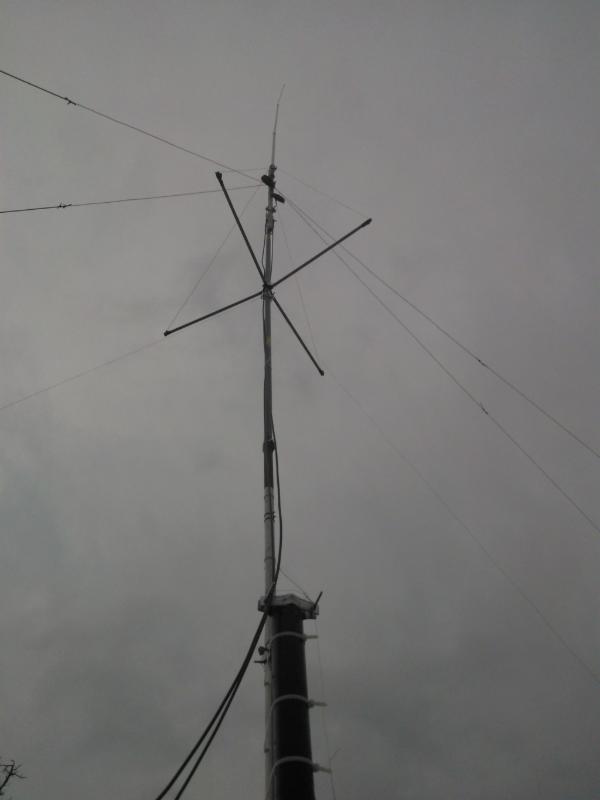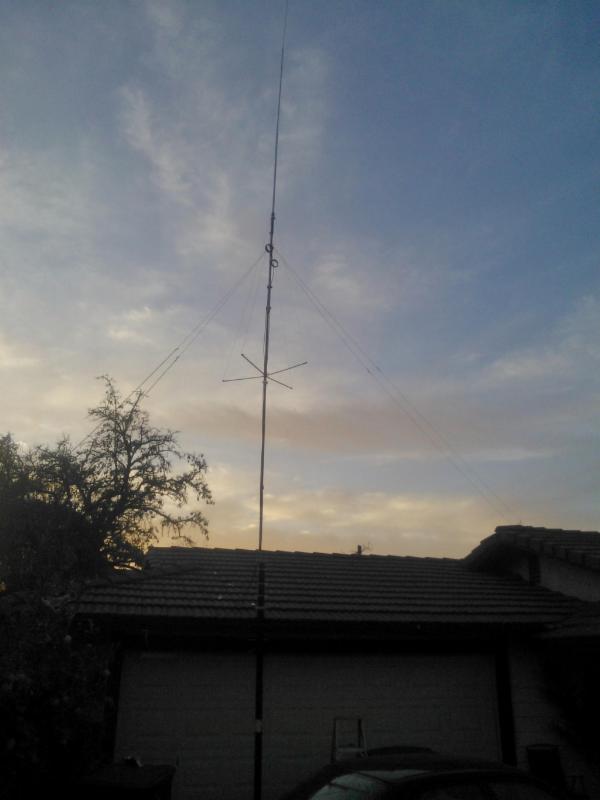I wanted to get some thoughts as to a proposal. I built a 2-element fan-dipole with one element tuned for 11-meter use and the other for 10-meter use. While my 1/2 wave vertical (A99) works quite well for both local and dx contacts on both bands, I would like to have the option available to switch to a horizontally polarized antenna on demand via a 2-way switch-box in the shack.
I have already established in my other thread that the A99 benefits nicely from the addition of 1/4 wave radial elements. What are your thoughts on mounting the inverted-v dipole directly below the feedpoint of the A99 vertical? This section of mast is actually made of wood, so that mast interference at the current-maxima of the dipole would be minimized. The inverted v features a choke balun at its feedpoint to prevent feedline radiation.
My thinking is that while I am operating the A99, the slanted legs of the dipole will effectively be seen as additional radial sections and not significantly interact or detune the A99 vertical. While operating the inverted v, I would suppose it would interpret the A99 vertical as if it were a section of mast above its feedpoint. As a final bonus, the inverted V elements will further "guy" the mast. It's a win-win in theory. In practice, who knows. I figured someone here has either attempted something like this or knows someone who has (and whatever their experience was).
Your ideas are much appreciated...
I have already established in my other thread that the A99 benefits nicely from the addition of 1/4 wave radial elements. What are your thoughts on mounting the inverted-v dipole directly below the feedpoint of the A99 vertical? This section of mast is actually made of wood, so that mast interference at the current-maxima of the dipole would be minimized. The inverted v features a choke balun at its feedpoint to prevent feedline radiation.
My thinking is that while I am operating the A99, the slanted legs of the dipole will effectively be seen as additional radial sections and not significantly interact or detune the A99 vertical. While operating the inverted v, I would suppose it would interpret the A99 vertical as if it were a section of mast above its feedpoint. As a final bonus, the inverted V elements will further "guy" the mast. It's a win-win in theory. In practice, who knows. I figured someone here has either attempted something like this or knows someone who has (and whatever their experience was).
Your ideas are much appreciated...


